Recently, I was trying to solve this dynamic programing problem, but somehow not getting the approach to solve it.
The editorial to the problem seems very confusing too and i would understand how to think properly to approach this problem.
Thanks.
The problem
F. Yet Another Minimization Problem: Time limit per test: 2 seconds | Memory limit per test: 256 megabytes | Input: standard input | Output: standard output
You are given an array of n integers a1... an. The cost of a subsegment is the number of unordered pairs of distinct indices within the subsegment that contain equal elements. Split the given array into k non-intersecting non-empty subsegments so that the sum of their costs is minimum possible. Each element should be present in exactly one subsegment.
Input
The first line contains two integers n and k (2 ≤ n ≤ 105, 2 ≤ k ≤ min (n, 20)) - the length of the array and the number of segments you need to split the array into.
The next line contains n integers a1, a2, ..., an (1 ≤ ai ≤ n) - the elements of the array.
Output
Print single integer: the minimum possible total cost of resulting subsegments.
Example 1
input
7 3
1 1 3 3 3 2 1
output
1
Example 2
input
10 2
1 2 1 2 1 2 1 2 1 2
output
8
Example 3
input
13 3
1 2 2 2 1 2 1 1 1 2 2 1 1
output
9
Note:
In the first example it's optimal to split the sequence into the following three subsegments: [1], [1, 3], [3, 3, 2, 1]. The costs are 0, 0 and 1, thus the answer is 1.
In the second example it's optimal to split the sequence in two equal halves. The cost for each half is 4.
In the third example it's optimal to split the sequence in the following way: [1, 2, 2, 2, 1], [2, 1, 1, 1, 2], [2, 1, 1]. The costs are 4, 4, 1.

